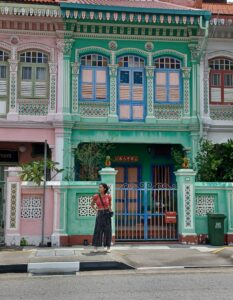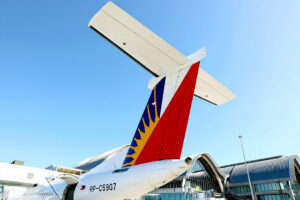Spotlight on Singapore, a confluence of cultures

By Brontë H. Lacsamana, Multimedia Reporter
WHEN shining the light on Singapore, the images that pop up in one’s head usually include the grandiose Marina Bay Sands, the iconic and proud Merlion statue, and the architectural marvel that mimics nature, Gardens by the Bay.
Let’s not even start with the vast array of malls all around Singapore, where locals and tourists alike try to beat the heat and engage in retail therapy.
On your next visit, take the opportunity to get to know facets of Singapore that most Filipinos don’t usually explore. Whether it’s a deep dive of local cuisine or culture or just a completely unique experience, believe it or not, this small country has a lot to offer.
TIONG BAHRUA good starting point would be the quaint neighborhood of Tiong Bahru, which means “new cemetery” — tiong meaning “tomb” in Hokkien, and bahru meaning “new” in Malay. The area was a burial ground before it became a housing estate in the 1920s.
The name alone, combining Chinese and Malay, reflects a confluence of cultures that is a signature of Singapore. Tiong Bahru blends old and new, with a coexistence of aging and young tenants, of both vintage structures and trendy lifestyle shops and cafés.
Its market and hawker center show this as well, designed colorfully and spaciously to give the hawker tradition a more modern spin. Grabbing a bite from one of the many food stalls is a must before exploring the idyllic neighborhood.
An easter egg to look out for: there are many murals by artist Yip Yew Chong around Singapore, all reminiscent of the country’s distant past.
KATONG AND JOO CHIATFor a taste of culture, the trendy yet nostalgic Katong/Joo Chiat neighborhood located in the Eastern side of the city offers a glimpse of Peranakan heritage.
Referring to the Chinese diaspora in the straits of the Malay peninsula, Peranakans embody the confluence of cultures that can be found in Singapore.
Rumah Kim Choo, a boutique shop and heritage gallery that gives tours and workshops, showcases Peranakan traditions.
From the intricately embroidered kebaya and beaded shoes worn by women to the historical origin of their rice dumplings to the interesting motifs on wedding ceremony beds and wardrobes, each little detail can be explained to curious tourists.
For Edmond Wong, director of business development at Rumah Kim Choo, Peranakans show “the coming together of different cultures, how it is to marry ideas together.”
To keep the heritage tour going, the Intan Peranakan Museum is a great place to hop to next for more soaking in of the local culture.
Owned by Alvin Yapp, who started off collecting Peranakan antiques as a hobby, the museum has the feel of a large cozy home, full of family heirlooms and old furniture.
“The people that sold or gave these items to me would also share the story behind them, and so that was how I learned about my own culture,” he told BusinessWorld. “It was never meant to be a museum. It was purely my own collection.”
To take aesthetically pleasing photos, head to the colorful houses on Koon Seng Road, known as a hotspot for photoshoots in Singapore. The pastel structures do look pretty, but if you look closely, they also have Peranakan motifs and styles.
KAMPONG GLAMA full day can be dedicated to Singapore’s Muslim Quarter, located in Kampong Glam, filled with restaurants of various cuisines and stores that sell textiles and perfumes.
Arab Street and Haji Lane are the vibrant centers of this neighborhood. Tourists can take a stroll in the shopping areas surrounding the mosque, and go further out to the alleyways to see more clothes stores, street art, and cafés.
Those seeking a unique experience must head into SIFR Aromatics, one of the shops in the district, which offers a two-hour crash course in perfumery. There, you can learn to distinguish top notes and such, experiment with fragrances, and create your own scent.
“If you see a mosque, either they have free perfumes inside or you’ll see a perfume shop. Arabs have a strong relationship with perfumes,” said Johari Kazura, the aromatics studio owner who teaches the course.
Also in the neighborhood is the Vintage Camera Museum, a cool attraction especially for those who love photography. It’s hard to miss with an exterior shaped like a camera, with the entrance itself in the shape of a lens.
Inside, you can learn about the history of photography, from portable cameras and giant cameras to spy cameras and tiny cameras.
VINTAGE VESPA SIDECAR TOURSingapore Sidecars is a company that lets you take a look at Singapore in a completely new way: from the sidecar of a vintage Vespa while your street-savvy guide breezes you around on the tour of your choice.
The starting point of the ride is the Capitol Theatre.
To enjoy it, sit back and relax as a knowledgeable local introduces you to the sights and sounds of a city you probably thought you knew, but not in this particular way.
A one-hour tour of Kampong Glam, for example, means being woven in and out of alleys and getting a rare peek into parts of town you didn’t know about.
Make sure to take a lot of pictures!
CHINATOWNFinally, there’s the essential visit to Chinatown, where you can shop for all sorts of delicacies and take in the history and landmarks.
Note: Like in Katong/Joo Chiat and Kampong Glam, the narrow shophouses reflect the width-based taxation that led properties to slim down structures. They’re also as vibrantly colored, making a nice background for photos.
For an in-depth, immersive experience, Let’s Go offers theatrical tours where your guide plays a character that can better explain the ins and outs of Singapore’s Chinatown.
Fengjie in Bukit Pasoh is a fun one where you follow Fengjie, a majie (spinster servant) whom you bump into in the area and decide to join as she runs errands for her master, explaining tidbits about Chinese immigrants’ lives and traditions along the way.
More Easter eggs: Singapore really loves its murals. Spot Detective Conan grabbing a bite from a local food cart and some intense cup pouring going on at a wall in town.
BusinessWorld visited Singapore as a guest of the Singapore Tourism Board (STB).
Photos were shot on a Canon EOS 700D and a Samsung Galaxy A32 5G.




